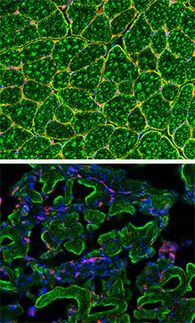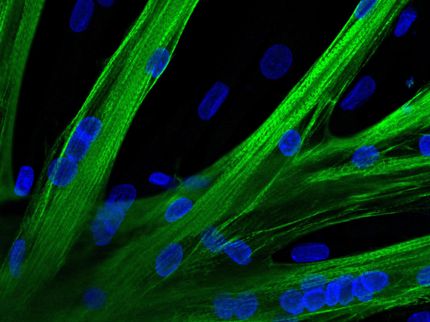Drug pair slows progression of muscular dystrophy in animal models
Advertisement
A pair of protein-inhibiting compounds is effective at slowing the progression of a form of muscular dystrophy in animal models, a group of University of Florida Health researchers has found.
The compounds of this novel drug class are particularly intriguing for use by Duchenne muscular dystrophy patients because they can be taken orally, said David Hammers, Ph.D., a postdoctoral associate in the UF College of Medicine’s department of pharmacology and therapeutics. The findings were published recently in the journal JCI Insight.
Duchenne muscular dystrophy, or DMD, is a genetic disorder that typically affects young boys and causes progressive muscle degeneration and the buildup of fatty, fibrous tissue in place of muscle. About one of every 3,500 boys worldwide has the disorder and there is no cure, according to the National Institutes of Health.
The findings are significant for several reasons, Hammers said. The oral compounds have a significant advantage over intravenous DMD treatments because they don’t cause an unwanted immune system response. In the animal models, the compounds also prevented one of the hallmarks of the disease: Muscle damage caused by movement. In DMD patients, the simple act of moving damages muscles, which are then unable to repair themselves correctly.
Two compounds, edasalonexent and CAT-1041, effectively inhibited a protein that controls DNA transcription, drives inflammation and suppresses muscle stem cell regeneration, the researchers found. That protein, known as NF-kappaB, also inhibits muscle regeneration.
“NF-kappaB is affecting a number of things, and all of them are bad,” said H. Lee Sweeney, Ph.D., a professor in the department of pharmacology and therapeutics and director of the UF Myology Institute.
In a six-month trial, CAT-1041 allowed male mice with DMD to run longer distances and develop stronger leg muscles and better diaphragm function than mice that were not treated with the drugs, researchers found. The protective effect of CAT-1041 may be related to a significant increase in a protein involved in skeletal muscle repair, they noted.
The mice also showed improved heart function, though Sweeney said it’s less clear why suppressing NF-kappaB improves heart function in the mice.
During testing at another institution on a dog with a naturally occurring case of DMD, the compounds improved muscle function in its hind limb and diaphragm. That is particularly encouraging because DMD is much more severe in dogs than mice, Sweeney said.
“The dog’s disease is much more like the human form, and that’s why we’re very excited,” he said.
A clinical trial involving 31 boys is underway at UF Health, and results are expected within a year.
Even with potential advances in gene therapy treatments, Sweeney said a true cure for DMD is not yet here. The protein inhibitor could be used to complement gene therapy or perhaps used in combination with other drug therapies. Ideally, he said, DMD patients can stop using steroid-based treatments that have side effects and instead get access to an NF-kappaB inhibitor that better promotes muscle repair.
“This population of DMD patients will always need something like an NF-kappaB inhibitor because it will always allow the muscle to repair itself better,’’ Sweeney said.




























































